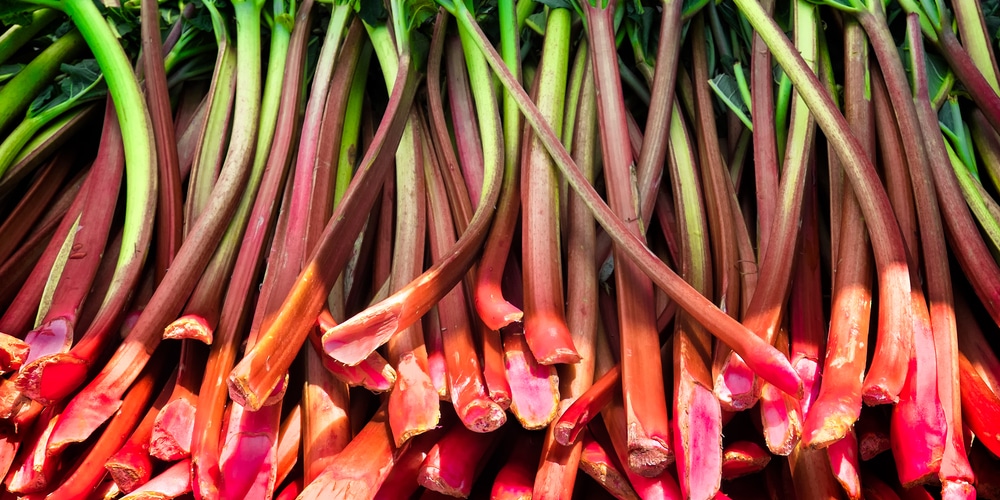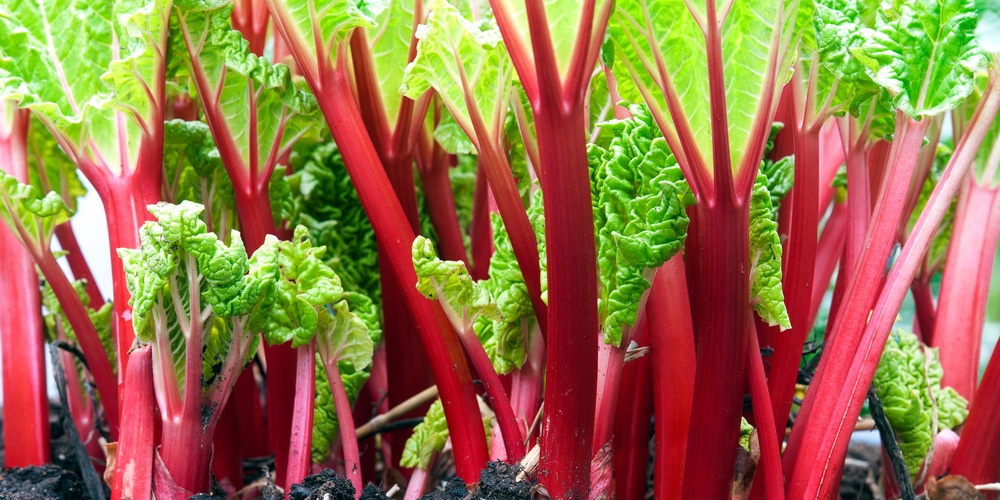Rhubarb is a perennial known for its large, triangular leaves and thick, fleshy stalks. Its stalks can range in color from green to reddish-purple and are often used in pies and jams. Its glossy and dark green leaves have a distinctive palmate shape.
Despite its intriguing foliage, this plant is finicky. It is particular about the amount of water it needs and the type of fertilizer you use. It requires a good balance of both for it to thrive and produce those beautiful, thick stalks.
If you have a rhubarb in your garden or thinking of adding this plant to your collection of perennials, here are some tips on how much water and what type of fertilizer to use.
Rhubarb Watering Needs

Watering Rhubarb is a tricky business. Too much water and the delicate stalks will become waterlogged and mushy; too little water and they’ll turn tough and stringy.
One of the most important things that you need to know about this plant is that it heavily relies on water. This means that your soil needs to have good drainage, preventing the roots from sitting in water.
If your soil doesn’t have good drainage, you can improve it by mixing in some organic matter such as compost.
During the growing period, new rhubarb plantings will need to be watered frequently. Water them deeply so that the water reaches the roots about once a week. They like their soil to be moist and will need even more water during periods of hot, dry weather.
Once the plant has been established, you can get away with at least one inch of watering per week. This is especially true if your area rarely gets rain and you have to supplement with irrigation.
If you live in an area with regular rainfall, you may not need to water your rhubarb at all.
So, how can you ensure that your Rhubarb plants get just the right amount of water? The best way is to check the soil regularly. Stick your finger in the soil and if it feels dry, give the plant a good soak.
If the soil is still moist, then hold off on watering for a few days. In general, it’s easier to underwater than to overwater, so err on the side of caution. If you do happen to overwater your plants, don’t worry – they’ll bounce back quickly once they’ve had a chance to dry out.
What to Feed Rhubarb: Fertilizer Needs
Don’t be intimidated by its large leaves. This plant is actually relatively easy to feed. And despite their regular needs for watering and fertilizing, rhubarb plants are still relatively easy to grow – even new beginners can successfully grow them with a bit of care and attention.
When it comes to fertilizing, rhubarb plants need a good balance of nitrogen, phosphorus, and potassium. The best way to achieve this is to use a fertilizer that is specifically designed for fruit and vegetables. A 10-10-10 ratio is always a good place to start.
You should fertilize your rhubarb plants two times a year. Do it during the spring and fall. Doing so ensures that the plant has the nutrients it needs to grow during the growing season and store energy for the winter.
Similar to its watering needs, overdoing its fertilization needs can be just as bad. Too much nitrogen in the soil can actually stunt the growth of rhubarb plants. Too much phosphorous can make the stalks taste bitter. So, as with everything else, moderation is key.
To do this, simply spread approximately half a cup of fertilizer around the base of the plant. Ensure not to get any on the leaves or stems, as this can cause burning. Water your soil well after fertilizing to help the nutrients reach the roots.
Alternatively, an all-natural fertilizer can also be used instead of the 10-10-10 fertilizer. To do this, simply mix together some compost and well-rotted manure. This will provide the plant with all the nutrients it needs to grow healthy and strong.
What to Feed Rhubarb: Final Thoughts
Overall, there are two things that you need to remember when it comes to feeding rhubarb: water and fertilizer. Both are essential for the plant to grow healthy and strong.
The right amount of water and fertilizer will ensure that your rhubarb plants are productive and produce delicious, sweet stalks. Too much or too little of either can result in problems such as stunted growth, bitter taste, or sometimes, even death.
As long as you remember to keep an eye on your plant’s watering and fertilizing needs, you’ll be well on your way to growing a healthy, thriving rhubarb plant.
Related Article: How Much Sun Does Rhubarb Need?

